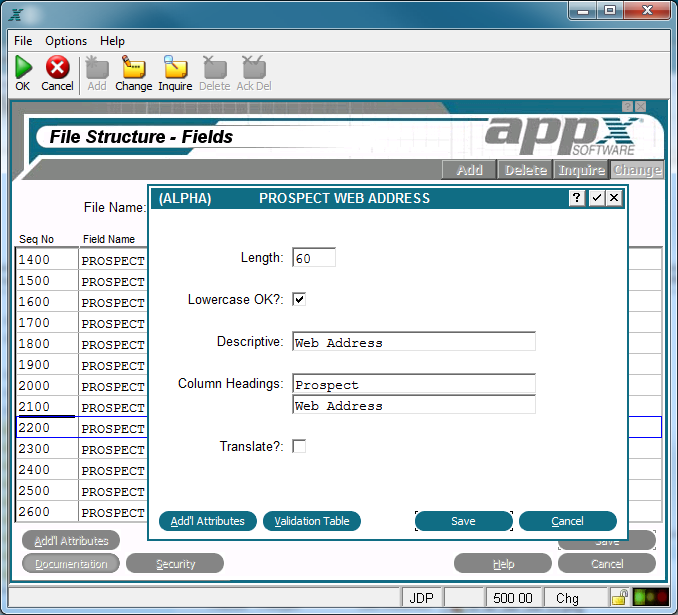Chapter 2-4: Files and Fields |
Alpha Fields An Alpha field can contain numbers, letters, and special characters, such as #, $, and &. Examples include names, addresses, certain account numbers or serial numbers, and text. The Alpha fields overlay, shown below, allows you to add Alpha specific attributes to those already defined for fields. The alpha field overlay displays after you complete the entries on the Fields specifications screen if the Field Type you select is ALPHA.
Alpha Fields Overlay The Alpha Fields overlay contains the following fields: Length designates the number of character positions, or length, of this field up to 32,767 (32K) characters.
Note: APPX does not support fields (or records) longer than 32K characters. If you map an APPX file to a pre-existing RDBMS table, you may find that the table includes a column larger than 32K; such columns are often referred to as memo columns. APPX offers limited support for memo columns. You can access a memo column by defining (in the APPX data dictionary) an ALPHA X(n) field in the corresponding position.
Lowercase OK? indicates whether or not a modifiable item on an interactive screen can be entered in upper- and lowercase letters. If 'no' Descriptive provides a longer, more easily understood alternative to Field Name, one that is not required to be unique within an application. If blank at all default levels, Field Name is used. Refer to the definition of Descriptive in the Common Domain Specifications section of this manual for more information. Column Headings designates up to two lines of column heading text. The APPX output process facility uses this text to generate standard column heading images for Start of Page and Start of Range class frames. For cosmetic reasons, the length of headings should not exceed the length of a field itself. Refer to Standard Column Heading Image for additional information. Translate? Indicates if this domain or field is eligible for language translation. Currently the following field types may be translated (others will have the field protected) Token fields Alpha & Format fields that have a validation table
Work fields that are Token, Alpha, Format, or Text The Alpha Fields overlay provides two options which are described in the corresponding sections: |
Application Design Manual "Powered by Appx Software"1018 ©2006 By APPX Software, Inc. All Rights Reserved |
